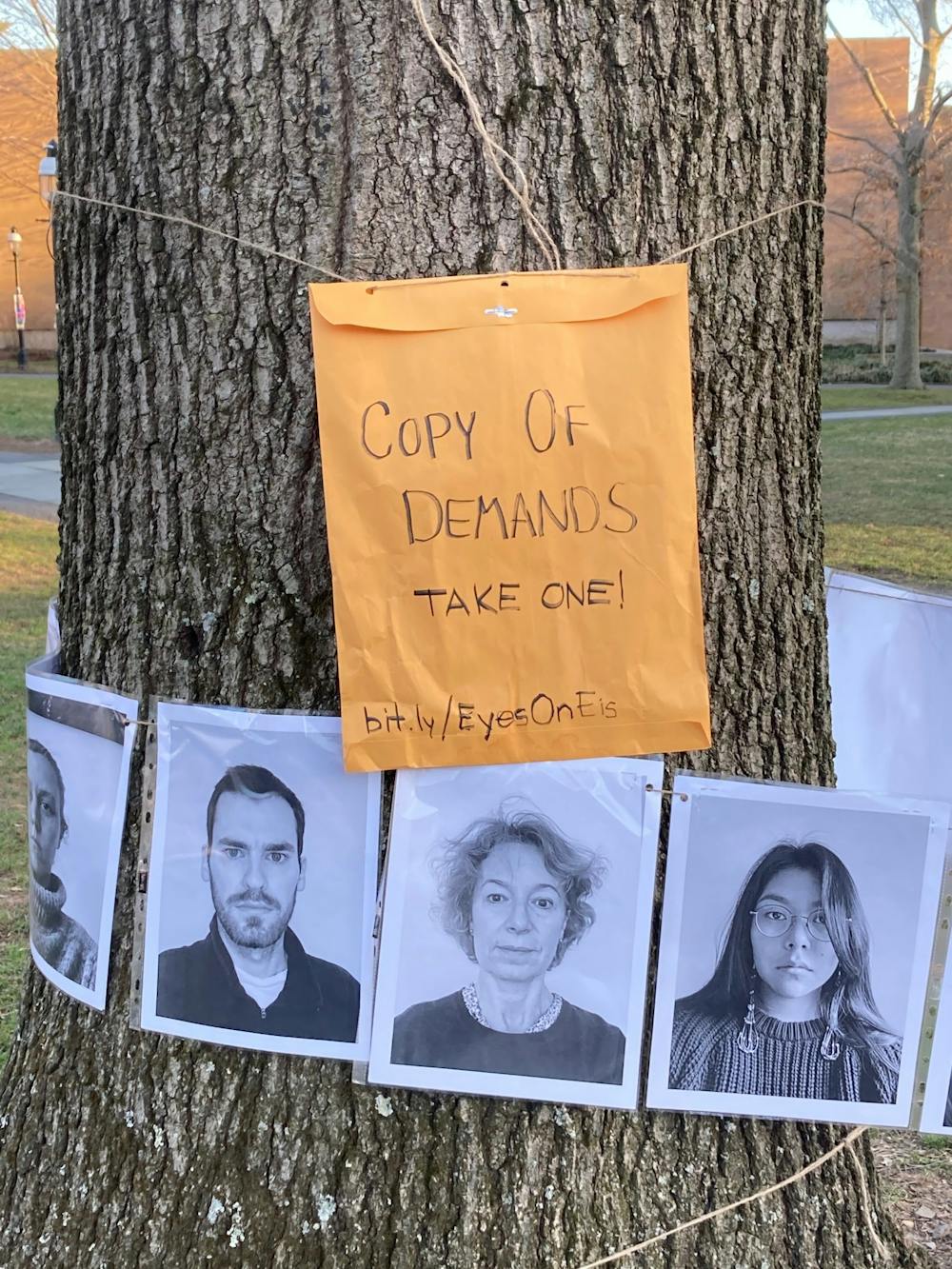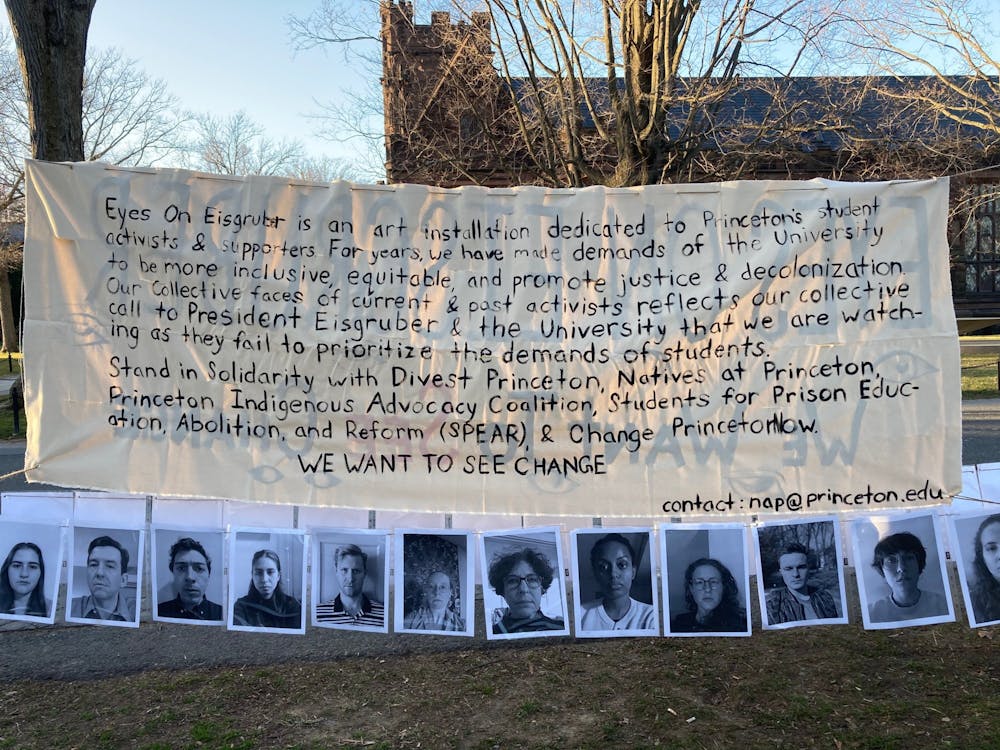Through an art exhibition displayed outside of Nassau Hall earlier this month, several student activist groups pressured the University administration to act on previously-submitted demands.
“Eyes on Eisgruber,” referring to President Christopher Eisgruber ’83, consisted of 60 black-and-white portraits of student and alumni activists as well as a banner with a message from the groups spearheading the demonstration: Divest Princeton; Natives at Princeton; the Princeton Indigenous Advocacy Coalition (PIAC); Students for Prison Education, Abolition, and Reform (SPEAR); and Change Princeton Now. The exhibition was initially installed on March 21, though it has been taken down to avoid weather damage.
“For years, we have made demands of the University to be more inclusive, equitable, and promote justice and decolonization,” the banner read. “Our collective faces of current and past activists reflects our collective call to President Eisgruber and the University that we are watching as they fail to prioritize the demands of students.”
The groups responsible for organizing the installation have compiled a list of each of their demands for the short and long term.

Multiple faces and a copy of demands attached to the instillation
Courtesy of Isabel Rodrigues
Divest Princeton is calling on the University to end all formal associations with fossil fuel companies, in addition to reiterating their call for fossil fuel divestment currently being considered by the administration. In an email to The Daily Princetonian, Anna Hiltner ’23, co-coordinator of Divest Princeton, emphasized the necessity of this demonstration and the urgency of the issues that have yet to be addressed.
“We want to remind the administration that even though many of us are studying remotely, graduated, or off-campus, we are still holding them accountable,” she wrote. “If they continue to delay and delay, we will notice and we will not stand for it.”
Hiltner cited the effectiveness of artwork as a form of activism and detailed what she hopes the installation will achieve.
“The project is a way for us to both literally and figuratively show that we have our eyes on Eisgruber. If the administration and [University] Board of Trustees actually care about our work and activism, we want them to show they care and treat this matter with some urgency because climate change and change on campus cannot afford another year of delay,” Hiltner explained.
Natives at Princeton is calling for the creation of an on-campus affinity space and hiring of staff members to support and recruit Native students. PAIC is calling for the creation of a certificate program in Indigenous Studies, among other demands.
In an interview with the ‘Prince,’ Keely Toledo ’22, one of the leaders of PIAC and a Natives at Princeton co-president, noted that while the project is directed at the administration, it is also a form of visual solidarity for student activists on campus.
“The whole point of the project is to let activists know — be it current past, present, or future — that we see you and that there is a community of change on campus,” she said.

Toledo also expressed her gratitude toward Change Princeton Now — a coalition of undergraduates and graduate students with a series of demands relating to anti-racism on campus — for their activism and support on this project. She explained that the group will be working with professors to organize a teach-in to accompany the installation, which will involve lessons and conversation spaces about activism at Princeton.
While initial portrait submissions were from students from the groups organizing the demonstration, the project soon garnered support from the wider University community, with portraits submitted by current undergraduate and graduate student activists as well as by alumni.
School of Public and International Affairs graduate student Elie Amkraut GS explained his decision to submit a portrait to the project in an email to the ‘Prince.’
“As a policy school student, I've heard a lot about the history of student activism leading to nice words but disappointing concessions in the form of bureaucratic committees and processes,” he wrote.

The art instillation outside of Nassau Hall
Courtesy of Isabel Rodrigues
“I am hopeful that ‘Eyes on Eisgruber’ and the continued activism of groups such as Change Princeton Now can remind the administration that words and acknowledgment of racial inequity are nice, but that student activists will be watching to make sure these words are acted on,” Amkraut added.
The installation has since been taken down to avoid weather damage, and the materials will be saved for future use, according to Divest Princeton member Isabel Rodrigues ’23. Rodrigues is a Head Copy Editor and Head Podcast Editor at the ‘Prince.’





